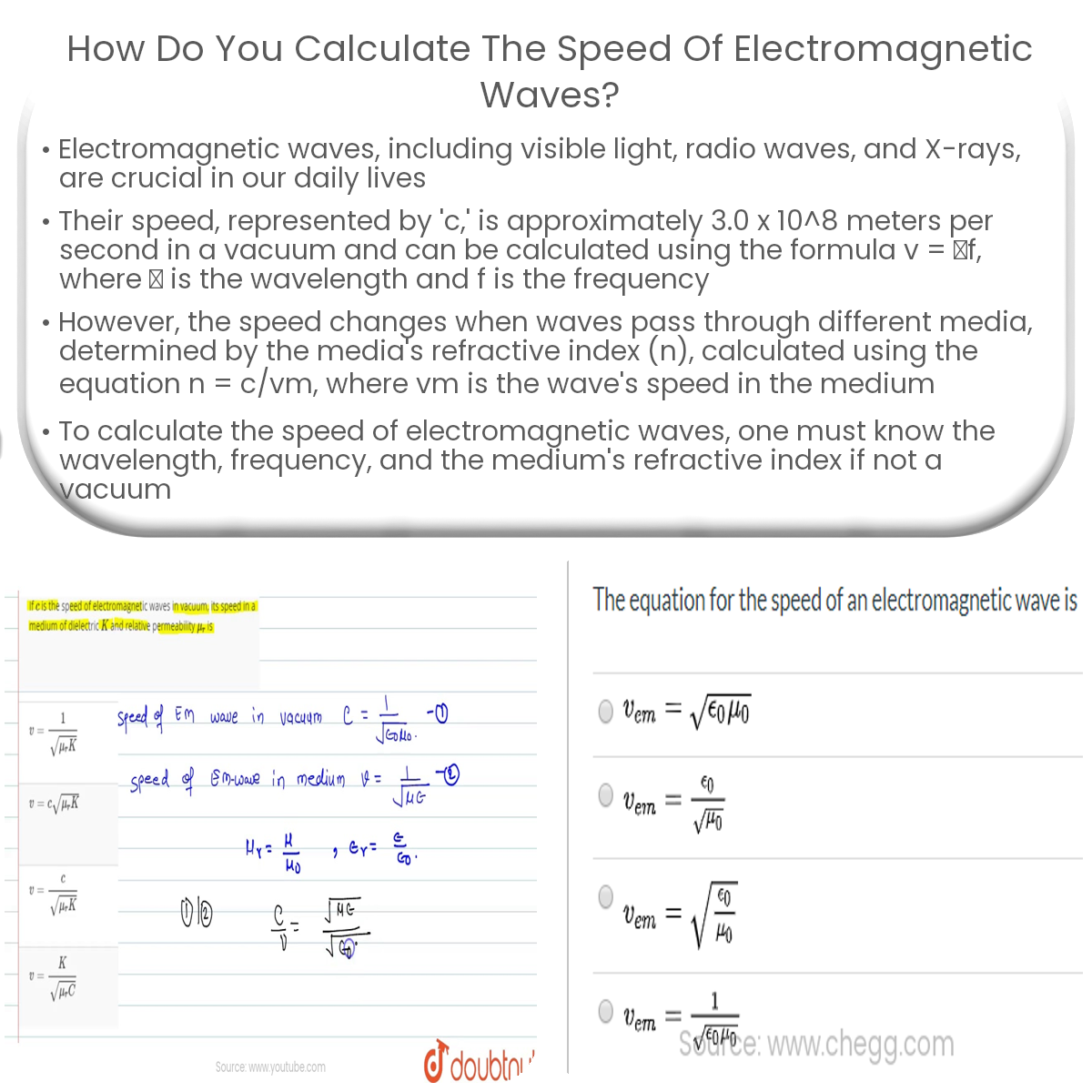To calculate the speed of electromagnetic waves, use the formula v = λf, where v is the speed, λ is the wavelength, and f is the frequency.
Calculating the Speed of Electromagnetic Waves
Electromagnetic waves, which include visible light, radio waves, and X-rays, are an essential aspect of our daily lives. Understanding the speed of these waves is crucial to knowing how they propagate and interact with matter. In this article, we will discuss how to calculate the speed of electromagnetic waves and the factors that influence their velocity.
Electromagnetic Wave Basics
Electromagnetic waves are characterized by their wavelength (λ) and frequency (f). The relationship between these two properties is given by the following equation:
- v = λf
Here, v represents the speed of the wave, λ is the wavelength, and f is the frequency. The speed of an electromagnetic wave is constant in a vacuum and is represented by the symbol ‘c.’ The value of c is approximately 3.0 x 108 meters per second (m/s).
Speed of Electromagnetic Waves in Different Media
While the speed of electromagnetic waves is constant in a vacuum, it can change when the wave travels through different media. The speed of a wave in a particular medium is determined by the medium’s refractive index (n), which is given by the following equation:
- n = c/vm
Here, vm is the speed of the wave in the medium, and n is the refractive index. As the refractive index increases, the speed of the electromagnetic wave decreases. For example, the refractive index of air is approximately 1.0003, while that of water is about 1.33. As a result, light travels slower in water than in air.
Calculating the Speed of Electromagnetic Waves
With the equations mentioned earlier, we can calculate the speed of electromagnetic waves either in a vacuum or in different media. Here are the steps to follow:
- Determine the wavelength (λ) and frequency (f) of the electromagnetic wave.
- If the wave is traveling in a vacuum, use equation (1) to calculate the speed of the wave.
- If the wave is traveling in a medium, first determine the medium’s refractive index (n).
- Apply equation (2) to calculate the speed of the wave in the medium (vm).
In summary, calculating the speed of electromagnetic waves requires knowing the wavelength, frequency, and the medium through which the wave is traveling. The speed of the wave can then be determined using the appropriate equations for either a vacuum or a medium with a known refractive index.


